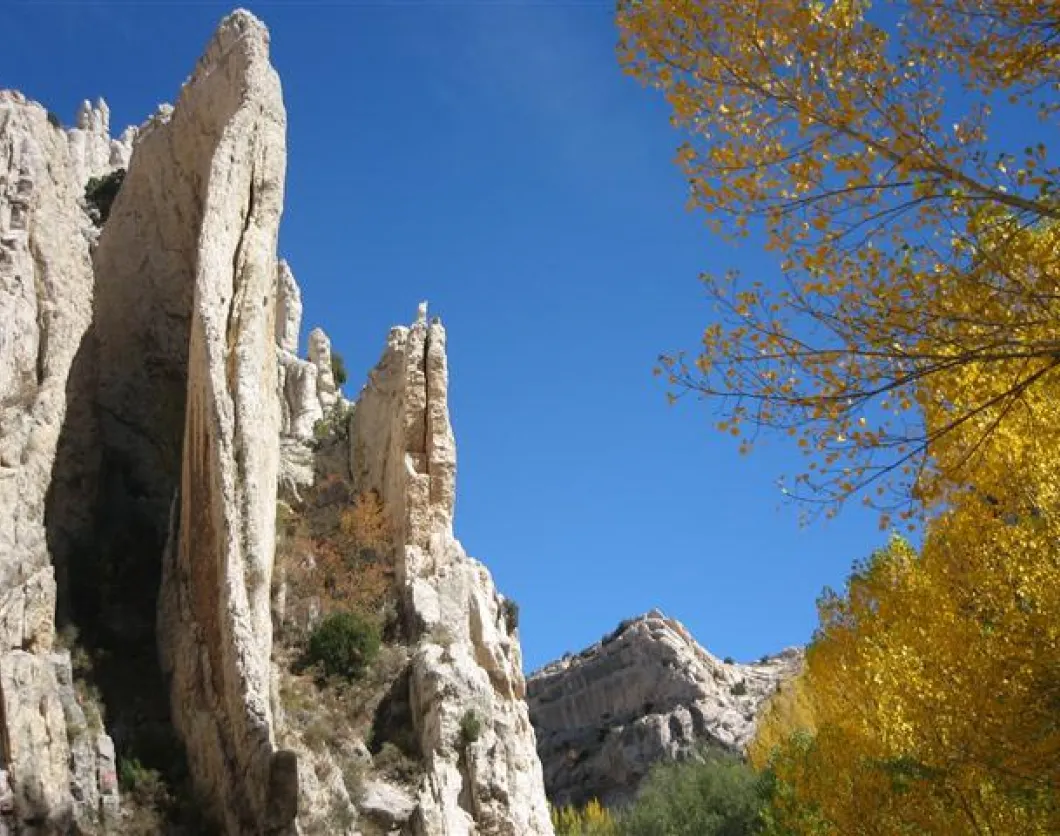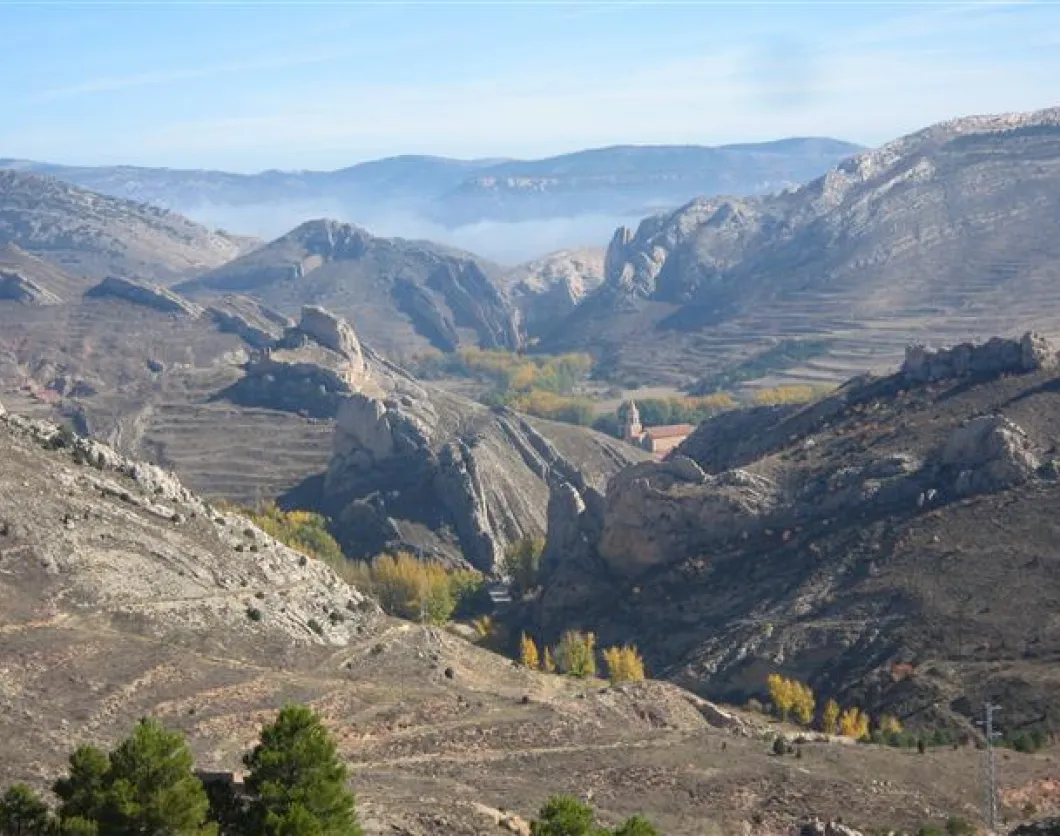The Maestrazgo Cultural Park is one of the pioneering geoparks in Europe as well as an exceptional laboratory for exploring the geological evolution of the Iberian Plate during Mesozoic and Tertiary periods. Splendid geological formations and structures, modeled into impressive landforms, are highly valued for scientific and educational activities. They are very interesting also to tourists, who get acquainted with the local nature and geology thanks to the intense research carried out here by geologists and paleontologists in the last decades.
Scientific research, educational activities, and geotourism products should not be dissociated from each other within the overall management plans of the Geoparks. It is important that researchers consider the cultural and social results as an important purpose of their studies. It is also necessary that the contents of geotourism products are closely linked with the current interpretations of researchers.
The Maestrazgo Cultural Park also has an important paleontological heritage, that is studied and excavated by the Fundación Conjunto Paleontológico de Teruel. A big museum in Teruel city and a network of small exhibition centers all around the Teruel province made up the Dinopolis project, linked to the F.C.P.T. and promoted by the regional government of Aragón. Two of these centers are located within Maestrazgo: Galve, a small village with an important ensemble of dinosaur fossils and footprints, and Castellote, showing an interesting site of Cretaceous petrified trunks.
On the one hand, this Geopark can discover three areas declared Natural Monument in 2009: Crystal Caves in Molinos, Órganos de Montoro and the Source River Pitarque. On the other hand there can be also found the Geological Park Aliaga. This Park includes eleven points of special interest showing explanatory diagrams and panels, all of them located at distances up to 7 km from Aliaga where you can join a tour and the guide will explain you how to read history in the rock layers, to reconstruct the millenary flows and ebbs of the sea in this region, today situated far away from the coastline, to imagine the different species of animals and plants living in the past, and to interpret the forces that built and modeled the landscape.
Some of them offer panoramic views of the geological formations, tectonic structures and landforms. Other outcrops show details of continental and marine sediments, minerals and fossils, as well as spectacular folds and tectonic faults. The ensemble of points constitutes an itinerary representative of the regional geology.
Some of its splendid geological formations and structures, modeled into the impressive landforms are highly valued for scientific and educational activities. These mainly deal with the Geological Park of Aliaga, at the western Maestrazgo: field-work stages by students from the universities of Utrecht, Plymouth and Cardiff, Practical Course on Geology of the Summer University of Teruel, and field-trips developed within the framework of different scientific congresses and symposia.
The Geopark was promoted by the municipality of Aliaga (Teruel province) and the Department of Geology of the Zaragoza University, and it has got financial support by the regional government of Aragon, Leader program of the European Union, Plan Miner of the Spanish Government, and local council of Comarca Cuencas Mineras. On the other hand, this project makes a part of the Maestrazgo Cultural Park, which provides legal support and protection for the natural and historical heritage of the region. The Mestrazgo Cultural Park is one of the founding members of the European Geoparks Network. The Maestrazgo Geopark is placed within a very interesting natural landscape and constitutes an exceptional viewpoint.









